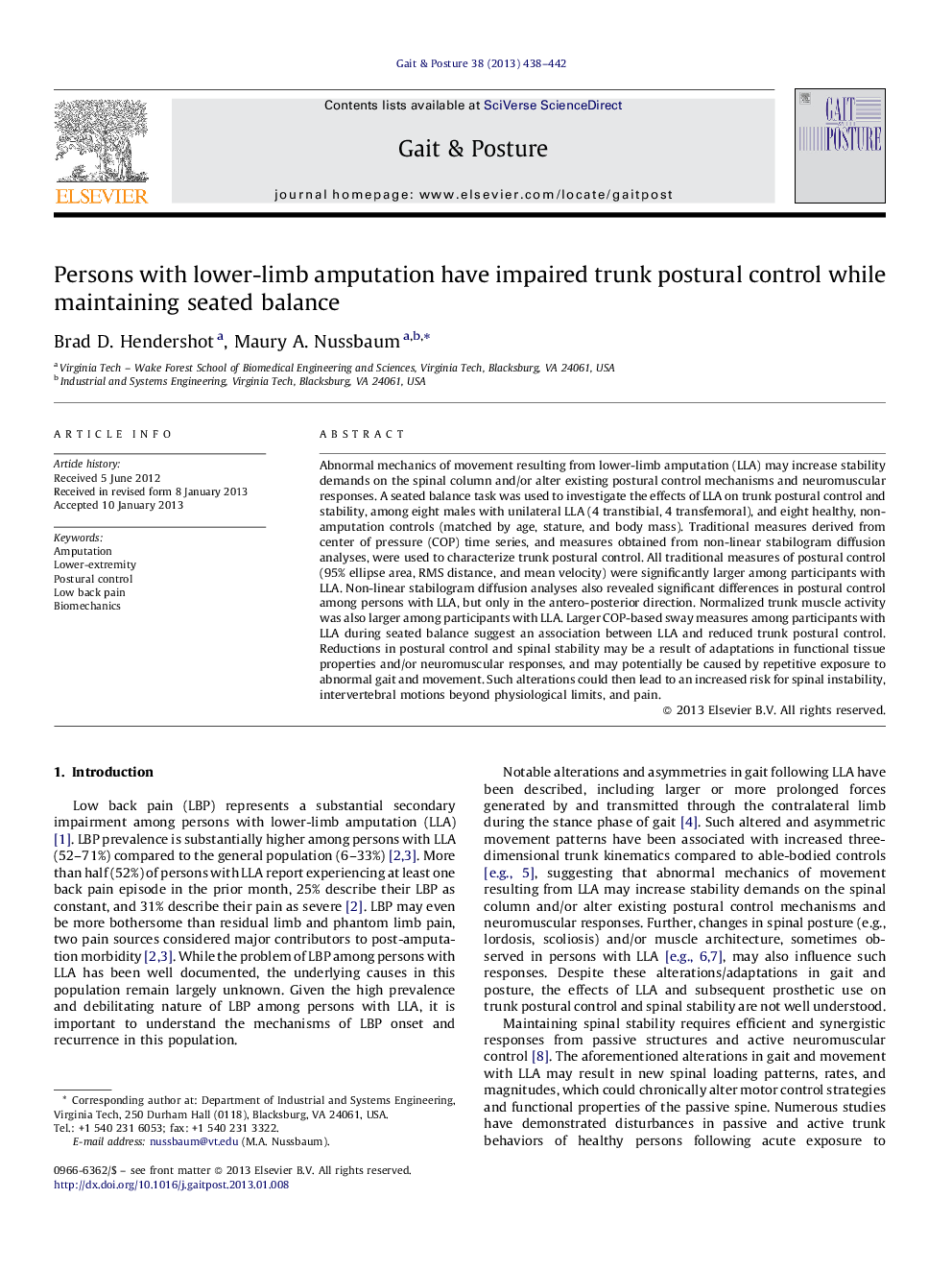| کد مقاله | کد نشریه | سال انتشار | مقاله انگلیسی | نسخه تمام متن |
|---|---|---|---|---|
| 6206615 | 1265650 | 2013 | 5 صفحه PDF | دانلود رایگان |
Abnormal mechanics of movement resulting from lower-limb amputation (LLA) may increase stability demands on the spinal column and/or alter existing postural control mechanisms and neuromuscular responses. A seated balance task was used to investigate the effects of LLA on trunk postural control and stability, among eight males with unilateral LLA (4 transtibial, 4 transfemoral), and eight healthy, non-amputation controls (matched by age, stature, and body mass). Traditional measures derived from center of pressure (COP) time series, and measures obtained from non-linear stabilogram diffusion analyses, were used to characterize trunk postural control. All traditional measures of postural control (95% ellipse area, RMS distance, and mean velocity) were significantly larger among participants with LLA. Non-linear stabilogram diffusion analyses also revealed significant differences in postural control among persons with LLA, but only in the antero-posterior direction. Normalized trunk muscle activity was also larger among participants with LLA. Larger COP-based sway measures among participants with LLA during seated balance suggest an association between LLA and reduced trunk postural control. Reductions in postural control and spinal stability may be a result of adaptations in functional tissue properties and/or neuromuscular responses, and may potentially be caused by repetitive exposure to abnormal gait and movement. Such alterations could then lead to an increased risk for spinal instability, intervertebral motions beyond physiological limits, and pain.
⺠Trunk postural control was assessed using a seated balance task. ⺠Larger sway measures found among persons with lower-limb amputation (LLA). ⺠Increased trunk muscle activity also found among persons with LLA. ⺠Reductions in postural control may suggest chronic alterations in trunk behaviors.
Journal: Gait & Posture - Volume 38, Issue 3, July 2013, Pages 438-442
